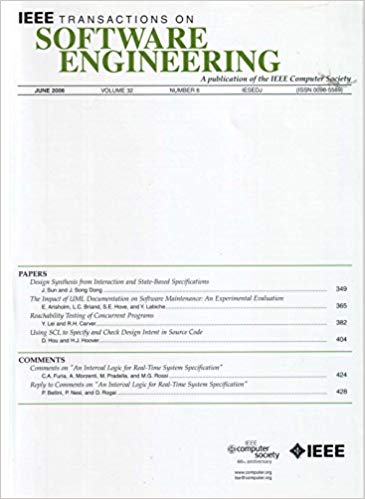On the Workflows and Smells of Leaderboard Operations (LBOps): An Exploratory Study of Foundation Model Leaderboards
IF 5.6
1区 计算机科学
Q1 COMPUTER SCIENCE, SOFTWARE ENGINEERING
引用次数: 0
Abstract
Foundation models (FM), such as large language models (LLMs), which are large-scale machine learning (ML) models, have demonstrated remarkable adaptability in various downstream software engineering (SE) tasks, such as code completion, code understanding, and software development. As a result, FM leaderboards have become essential tools for SE teams to compare and select the best third-party FMs for their specific products and purposes. However, the lack of standardized guidelines for FM evaluation and comparison threatens the transparency of FM leaderboards and limits stakeholders’ ability to perform effective FM selection. As a first step towards addressing this challenge, our research focuses on understanding how these FM leaderboards operate in real-world scenarios (“leaderboard operations”) and identifying potential pitfalls and areas for improvement (“leaderboard smells”). In this regard, we collect up to关于排行榜操作(LBOps)的工作流程和气味:对基础模型排行榜的探索性研究
基础模型(FM),例如大型语言模型(llm),它是大型机器学习(ML)模型,已经在各种下游软件工程(SE)任务中表现出显著的适应性,例如代码完成、代码理解和软件开发。因此,FM排行榜已经成为SE团队比较和选择适合其特定产品和目的的最佳第三方FM的重要工具。然而,缺乏标准的调频评估和比较指南威胁到调频排行榜的透明度,限制了利益相关者进行有效调频选择的能力。作为解决这一挑战的第一步,我们的研究重点是了解这些FM排行榜在现实场景中的运作方式(“排行榜操作”),并识别潜在的缺陷和需要改进的领域(“排行榜气味”)。在这方面,我们从五个不同的来源(GitHub, hugs Face Spaces, Papers With Code,电子表格和独立平台)收集了高达1,045美元的FM排行榜,以检查他们的文档,并与排行榜运营商直接沟通,以了解他们的工作流程。通过卡片分类和协商一致,我们确定了五种不同的工作流模式,并开发了一个领域模型,该模型捕获了关键组件及其在这些工作流中的交互。然后我们在LBOps中识别出8种独特的排行榜气味。通过减轻这些气味,SE团队可以在当前的LBOps实践中提高透明度、问责制和协作性,为FM比较和选择培养一个更健壮、更负责任的生态系统。
本文章由计算机程序翻译,如有差异,请以英文原文为准。
求助全文
约1分钟内获得全文
求助全文
来源期刊

IEEE Transactions on Software Engineering
工程技术-工程:电子与电气
CiteScore
9.70
自引率
10.80%
发文量
724
审稿时长
6 months
期刊介绍:
IEEE Transactions on Software Engineering seeks contributions comprising well-defined theoretical results and empirical studies with potential impacts on software construction, analysis, or management. The scope of this Transactions extends from fundamental mechanisms to the development of principles and their application in specific environments. Specific topic areas include:
a) Development and maintenance methods and models: Techniques and principles for specifying, designing, and implementing software systems, encompassing notations and process models.
b) Assessment methods: Software tests, validation, reliability models, test and diagnosis procedures, software redundancy, design for error control, and measurements and evaluation of process and product aspects.
c) Software project management: Productivity factors, cost models, schedule and organizational issues, and standards.
d) Tools and environments: Specific tools, integrated tool environments, associated architectures, databases, and parallel and distributed processing issues.
e) System issues: Hardware-software trade-offs.
f) State-of-the-art surveys: Syntheses and comprehensive reviews of the historical development within specific areas of interest.
 求助内容:
求助内容: 应助结果提醒方式:
应助结果提醒方式:


